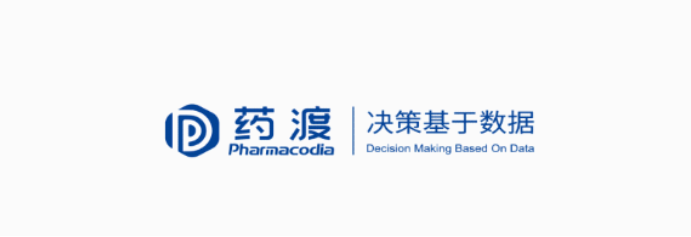
IQVIA predicts in its annual global drug use report that by 2027, the global drug market may increase to $ 1.9 trillion. Analysts of the Health Information Technology and Clinical Research Organization predict that the COVID-19 vaccine and therapy may increase another $ 500 billion for this.
01
Oncology Drugs
Oncology drugs are the highest-selling therapeutic agent in the world. It is expected to increase from 193 billion US dollars in 2022 to US $ 377 billion in 2027, with a compound annual growth rate of 13-16%. The growth momentum of cancer drugs includes the increase in sales brought by the early diagnosis of patients, the continuous launch of new drugs, more widely obtained new anti -cancer drugs in more countries, and the treatment period of extending drugs with survival benefits.
Oncology drugs include all cancer treatments including chemotherapy, radiation therapy, hormone therapy and targeted therapies designed to kill cancer cells to provide a therapeutic effect. Cancer, being a chronic and debilitating disease, requires a wide range of therapies to eradicate cancer cells. Various therapies such as chemotherapy, gene therapy and immunotherapy are used for cancer treatment due to their therapeutic advantages. Each of these therapies has its own advantages and is a very popular cancer treatment option. The increasing demand for various types of oncology drugs can be attributed to the increasing incidence of cancer, and these different cancers may respond to different types of treatments.
Rising incidence of cancer is one of the major factors driving the oncology drugs market. Given the rising incidence of cancer, most of the pharmaceutical companies are undertaking extensive R&D efforts in the field of oncology. As a result, more products are being introduced in the oncology drugs market. In addition, increasing focus on developing targeted therapies (e.g., CAR-T cell therapy) to provide more significant therapeutic benefits is driving the oncology drugs market as new products are gaining regulatory approval for cancer treatment. However, potential side effects associated with various cancer therapies such as bone loss and cost of oncology drugs, especially in low- and middle-income countries, can be challenging factors for the growth of the oncology drugs market.
Key players in oncology drug development include GlaxoSmithKline, Eli Lilly & Company, F. Hoffmann-La Roche Ltd, AbbVie Inc., Amgen Inc., Sanofi, Merck & Co., Inc, Novartis AG, Pfizer Inc, AstraZeneca, Bristol Myers Squibb., Gilead Sciences, Inc., Janssen Global Services, LLC, BAYER AG., Celldex Therapeutics Inc., Alaunos Therapeutics, Inc., Astellas Pharma Inc., Genentech, Inc., Soz International GmbH, BeiGene, etc.。
Heavyweight oncology drugs include: Keytruda (Merck), Revlimid (Bristo Myers Squibb), Opdivo (Bristol Myers Squibb), Imbruvica (AbbVie), Ibrance (Pfizer), Perjeta (Genentech), Tecentriq (Genentech), Avastin (Genentech), Herceptin (Genentech), Rituximab (Genentech), Darzalex (Janssen Biotech), Xti (Astellas Pharma), Venclexta (Abbvie), Gazvya (Genentech), Jakafi (Incyte Corporation), etc.。
02
Immunological drugs
Immunological drugs are the second largest therapeutic area of the drug market, likely to grow to $177 billion by 2027. Immunologic agents are drugs that can alter the immune response by enhancing or suppressing the immune system. They are used to fight infections, prevent and treat certain diseases.
Immunologic agents include drugs used for immunosuppression to prevent graft rejection. They can be used as cancer chemotherapy agents. Some immune agents can down-regulate the inflammatory process and can be used to treat inflammatory conditions such as rheumatoid arthritis and autoimmune diseases. Common immune agents include three major groups:
Significant forces of immune agent drugs include:Abbott, Organon, Pfizer, Soz, Amneal Pharmaceuticals, Apotex, Teva Pharmaceuticals, Biocon, Bristol Myers Squibb, Merck, CSL Behring, Sanofi, Leading Pharma, Accord Healthcare Inc, Amgen, Nabi Biopharmaceuticals, Ascend Laboratories, Camber Pharmaceuticals Inc, Grifols USA, JOM Pharmaceuticals, etc.。
03
Diabetes Drugs
Ref.
· Immunologic agents. Drugs.com.
· Diabetes care drugs market - growth, trends, covid-19 impact, forecasts (2023 - 2028). Mordor Intelligence.
· Immunology Market Size, Share & COVID-19 Impact Analysis, By Drug Class (MonoclonalImmunosuppressants, Others), By Disease Indication (Rheumatoid Arthritis, Psoriatic ArtSpondylitis, Inflammatory Bowel Disease, Prophylaxis of Organ Rejection, Others), By DistribRetail Pharmacies, Online Pharmacies), Regional Forecast, 2022-2029. Fortune Business Insights.
· Diabetes care drugs market - growth, trends, covid-19 impact, forecasts (2023 - 2028). Mordor Intelligence.
· Mullard, A. Drug sales to reach $1.9 trillion within 5 years? Nature Reviews Drug Discovery. 2023, 22, 172.

